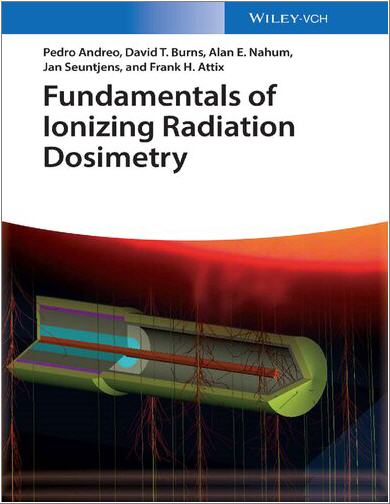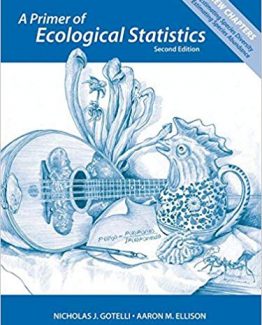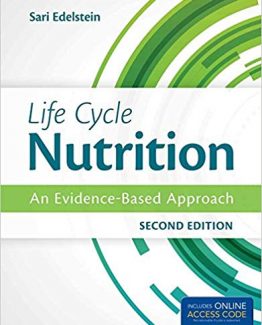Fundamentals of Ionizing Radiation Dosimetry 1st Edition by Pedro Andreo, ISBN-13: 978-3527409211
[PDF eBook eTextbook]
- Publisher: Wiley-VCH; 1st edition (August 28, 2017)
- Language: English
- 1000 pages
- ISBN-10: 3527409211
- ISBN-13: 978-3527409211
For senior undergraduate- or graduate-level students and professionals.
A new, comprehensively updated edition of the acclaimed textbook by F.H. Attix (Introduction to Radiological Physics and Radiation Dosimetry) taking into account the substantial developments in dosimetry since its first edition. This monograph covers charged and uncharged particle interactions at a level consistent with the advanced use of the Monte Carlo method in dosimetry; radiation quantities, macroscopic behaviour and the characterization of radiation fields and beams are covered in detail. A number of chapters include addenda presenting derivations and discussions that offer new insight into established dosimetric principles and concepts. The theoretical aspects of dosimetry are given in the comprehensive chapter on cavity theory, followed by the description of primary measurement standards, ionization chambers, chemical dosimeters and solid state detectors. Chapters on applications include reference dosimetry for standard and small fields in radiotherapy, diagnostic radiology and interventional procedures, dosimetry of unsealed and sealed radionuclide sources, and neutron beam dosimetry. The topics are presented in a logical, easy-to-follow sequence and the text is supplemented by numerous illustrative diagrams, tables and appendices.
Table of Contents:
Cover
Title Page
Copyright
Preface
Quantities and Symbols1
Roman letter symbols
Greek letter symbols
Mathematical symbols
Acronyms
Chapter 1: Background and Essentials
1.1 Introduction
1.2 Types and Sources of Ionizing Radiation
1.3 Consequences of the Random Nature of Radiation
1.4 Interaction Cross Sections
1.5 Kinematic Relativistic Expressions
1.6 Atomic Relaxations
1.7 Evaluation of Uncertainties
Exercises
Chapter 2: Charged-Particle Interactions with Matter
2.1 Introduction
2.2 Types of Charged-Particle Interactions
2.3 Elastic Scattering
2.4 Inelastic Scattering and Energy Loss
2.5 Radiative Energy Loss: Bremsstrahlung
2.6 Total Stopping Power
2.7 Range of Charged Particles
2.8 Number and Energy Distributions of Secondary Particles
2.9 Nuclear Stopping Power and Interactions by Heavy Charged Particles
2.10 The W-Value (Mean Energy to Create an Ion Pair)
2.11 Addendum – Derivation of Expressions for the Elastic and Inelastic Scattering of Heavy Charged Particles
Exercises
Chapter 3: Uncharged-Particle Interactions with Matter
3.1 Introduction
3.2 Photon Interactions with Matter
3.3 Photoelectric Effect
3.4 Thomson Scattering
3.5 Rayleigh Scattering (Coherent Scattering)
3.6 Compton Scattering (Incoherent Scattering)
3.7 Pair Production and Triplet Production
3.8 Positron Annihilation
3.9 Photonuclear Interactions
3.10 Photon Interaction Coefficients
3.11 Neutron Interactions
Exercises
Chapter 4: Field and Dosimetric Quantities, Radiation Equilibrium – Definitions and Inter-Relations
4.1 Introduction
4.2 Stochastic and Non-stochastic Quantities
4.3 Radiation Field Quantities and Units
4.4 Distributions of Field Quantities
4.5 Quantities Describing Radiation Interactions
4.6 Dosimetric Quantities
4.7 Relationships Between Field and Dosimetric Quantities
4.8 Radiation Equilibrium (RE)
4.9 Charged-Particle Equilibrium (CPE)
4.10 Partial Charged-Particle Equilibrium (PCPE)
4.11 Summary of the Inter-Relations between Fluence, Kerma, Cema, and Dose
4.12 Addendum – Example Calculations of (Net) Energy Transferred and Imparted
Exercises
Chapter 5: Elementary Aspects of the Attenuation of Uncharged Particles
5.1 Introduction
5.2 Exponential Attenuation
5.3 Narrow-Beam Attenuation
5.4 Broad-Beam Attenuation
5.5 Spectral Effects
5.6 The Build-up Factor
5.7 Divergent Beams – The Inverse Square Law
5.8 The Scaling Theorem
Exercises
Chapter 6: Macroscopic Aspects of the Transport of Radiation Through Matter
6.1 Introduction
6.2 The Radiation Transport Equation Formalism
6.3 Introduction to Monte Carlo Derived Distributions
6.4 Electron Beam Distributions
6.5 Protons and Heavier Charged-Particle Beam Distributions
6.6 Photon Beam Distributions
6.7 Neutron Beam Distributions
Exercises
Chapter 7: Characterization of Radiation Quality
7.1 Introduction
7.2 General Aspects of Radiation Spectra. Mean Energy
7.3 Beam Quality Specification for Kilovoltage x-ray Beams
7.4 Megavoltage Photon Beam Quality Specification
7.5 High-Energy Electron Beam Quality Specification
7.6 Beam Quality Specification of Protons and Heavier Charged Particles
7.7 Energy Spectra Determination
Exercises
Chapter 8: The Monte Carlo Simulation of the Transport of Radiation Through Matter
8.1 Introduction
8.2 Basics of the Monte Carlo Method (MCM)
8.3 Simulation of Radiation Transport
8.4 Monte Carlo Codes and Systems in the Public Domain
8.5 Monte Carlo Applications in Radiation Dosimetry
8.6 Other Monte Carlo Developments
Exercises
Chapter 9: Cavity Theory
9.1 Introduction
9.2 Cavities That Are Small Compared to Secondary Electron Ranges
9.3 Stopping-Power Ratios
9.4 Cavities That Are Large Compared to Electron Ranges
9.5 General or Burlin Cavity Theory
9.6 The Fano Theorem
9.7 Practical Detectors: Deviations from ‘Ideal’ Cavity Theory Conditions
9.8 Summary and Validation of Cavity Theory
Exercises
Chapter 10: Overview of Radiation Detectors and Measurements
10.1 Introduction
10.2 Detector Response and Calibration Coefficient
10.3 Absolute, Reference, and Relative Dosimetry
10.4 General Characteristics and Desirable Properties of Detectors
10.5 Brief Description of Various Types of Detectors
10.6 Addendum – The Role of the Density Effect and I-Values in the Medium-to-Water Stopping-Power Ratio
Exercises
Chapter 11: Primary Radiation Standards
11.1 Introduction
11.2 Free-Air Ionization Chambers
11.3 Primary Cavity Ionization Chambers
11.4 Absorbed-Dose Calorimeters
11.5 Fricke Chemical Dosimeter
11.6 International Framework for Traceability in Radiation Dosimetry
11.7 Addendum – Experimental Derivation of Fundamental Dosimetric Quantities
Exercises
Chapter 12: Ionization Chambers
12.1 Introduction
12.2 Types of Ionization Chamber
12.3 Measurement of Ionization Current
12.4 Ion Recombination
12.5 Addendum – Air Humidity in Dosimetry
Exercises
Chapter 13: Chemical Dosimeters
13.1 Introduction
13.2 Radiation Chemistry in Water
13.3 Chemical Heat Defect
13.4 Ferrous Sulfate Dosimeters
13.5 Alanine Dosimetry
13.6 Film Dosimetry
13.7 Gel Dosimetry
Exercises
Chapter 14: Solid-State Detector Dosimetry
14.1 Introduction
14.2 Thermoluminescence Dosimetry
14.3 Optically-Stimulated Luminescence Dosimeters
14.4 Scintillation Dosimetry
14.5 Semiconductor Detectors for Dosimetry
Exercises
Chapter 15: Reference Dosimetry for External Beam Radiation Therapy
15.1 Introduction
15.2 A Generalized Formalism
15.3 Practical Implementation of Formalisms
15.4 Quantities Entering into the Various Formalisms
15.5 Accuracy of Radiation Therapy Reference Dosimetry
15.6 Addendum–Perturbation Correction Factors
Exercises
Chapter 16: Dosimetry of Small and Composite Radiotherapy Photon Beams
16.1 Introduction
16.2 Overview
16.3 The Physics of Small Megavoltage Photon Beams
16.4 Dosimetry of Small Beams
16.5 Detectors for Small-Beam Dosimetry
16.6 Dosimetry of Composite Fields
16.7 Addendum—Measurement in Plastic Phantoms
Exercises
Chapter 17: Reference Dosimetry for Diagnostic and Interventional Radiology
17.1 Introduction
17.2 Specific Quantities and Units
17.3 Formalism for Reference Dosimetry
17.4 Quantities Entering into the Formalism
Exercises
Chapter 18: Absorbed Dose Determination for Radionuclides
18.1 Introduction
18.2 Radioactivity Quantities and Units
18.3 Dosimetry of Unsealed Radioactive Sources
18.4 Dosimetry of Sealed Radioactive Sources
18.5 Addendum–The Reciprocity Theorem for Unsealed Radionuclide Dosimetry
Exercises
Chapter 19: Neutron Dosimetry
19.1 Introduction
19.2 Neutron Interactions in Tissue and Tissue-Equivalent Materials
19.3 Neutron Sources
19.4 Principles of Mixed-Field Dosimetry
19.5 Neutron Detectors
19.6 Reference Dosimetry of Neutron Radiotherapy Beams
Exercises
Appendix A: Data Tables
A.1 Fundamental and Derived Physical Constants
A.2 Data of Elements
A.3 Data for Compounds and Mixtures
A.4 Atomic Binding Energies for Elements
A.5 Atomic Fluorescent X-ray Mean Energies and Yields for Elements
A.6 Interaction Data for Electrons and Positrons (Electronic Form)
A.9 Neutron Kerma Coefficients (Electronic Form)
References
Index
End User License Agreement
The four authors continuing the pioneering work of Frank Attix, Prof Pedro Andreo (Karolinska, Stockholm), Dr David T. Burns (BIPM, Paris), Prof Alan E. Nahum (University of Liverpool) and Prof Jan Seuntjens (McGill University, Montreal), are leading scientists in radiation dosimetry, having published between them more than 600 papers in the field. They have co-authored most of the existing national and international recommendations for radiotherapy dosimetry and received a number of international awards for their contributions
What makes us different?
• Instant Download
• Always Competitive Pricing
• 100% Privacy
• FREE Sample Available
• 24-7 LIVE Customer Support






Reviews
There are no reviews yet.